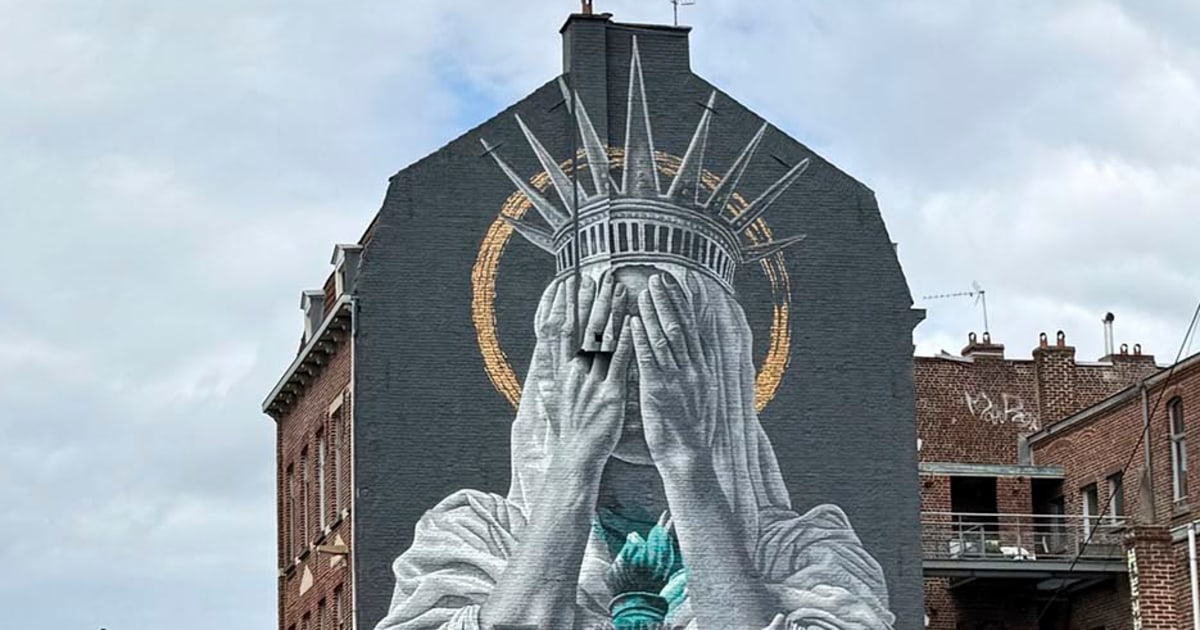A striking new mural in Roubaix, France, has captivated viewers and ignited discussions worldwide, featuring the iconic Statue of Liberty covering her eyes. Created by Amsterdam-based street artist Judith de Leeuw, this poignant artwork serves as a powerful visual critique of U.S. President Donald Trump's controversial immigration and deportation policies. The choice of this particular imagery resonates with the local community, where a significant immigrant population lives, highlighting the disconnect
Did You Know
Butterflies taste with their feet.
?
AD
between the ideals of freedom and the realities faced by many seeking refuge or a better life.
The mural, described by de Leeuw as "a quiet reminder of what freedom should be," encapsulates a profound message about the current state of human rights and immigration practices. As the artwork rapidly gained millions of views online, it stirred emotions and sparked vibrant discussions on social media, where supporters have celebrated its artistic and political significance. The act of depicting Lady Liberty—an emblem of hope—covering her eyes is not just a commentary on U.S. policy; it evokes a deep sense of disappointment and shame regarding the treatment of migrants in various parts of the world.
Despite its acclaim, the mural has also faced backlash from some Trump supporters, revealing the polarized nature of political sentiment surrounding immigration issues. This response highlights the mural's role as a catalyst for dialogue around the ethics of immigration policies in today's society. By transforming public spaces into platforms for political expression, de Leeuw joins a growing movement of artists using their work to challenge societal norms and advocate for social justice, encouraging audiences to reflect on what freedom truly represents in the context of modern struggles.
Q&A (Auto-generated by AI)
What inspired the mural's design?
The mural, created by Dutch artist Judith de Leeuw, is inspired by themes of freedom and the critique of U.S. immigration policies under Donald Trump. Depicting the Statue of Liberty covering her eyes, it serves as a poignant commentary on the perceived loss of freedom and human rights, particularly for immigrants. De Leeuw aimed to create a 'quiet reminder' of what freedom should represent, especially in a community like Roubaix, which has a significant immigrant population.
How has Trump responded to the mural?
While there is no direct response from Trump regarding this specific mural, similar artworks criticizing his policies have often elicited strong reactions from his supporters. The mural's depiction of the Statue of Liberty covering her eyes is seen as a direct jab at Trump's immigration policies, which have faced widespread criticism. Trump's supporters have expressed anger over the mural, reflecting the polarized views on immigration and representation in the U.S.
What is the significance of the Statue of Liberty?
The Statue of Liberty is a symbol of freedom and democracy, representing hope for immigrants arriving in the United States. Gifted by France in 1886, it embodies the ideals of liberty and justice. In the context of this mural, the statue's image is repurposed to critique current immigration policies, suggesting a loss of the core values it traditionally represents. The mural highlights the ongoing debate about immigration and the treatment of migrants in the U.S.
How do murals influence public opinion?
Murals can significantly influence public opinion by visually conveying powerful messages and sparking conversations. They serve as accessible forms of art that engage communities and provoke thought on social issues. In this case, the mural of the Statue of Liberty critiques immigration policies, encouraging viewers to reflect on the implications of such policies. By placing art in public spaces, artists can mobilize communities and inspire activism, shaping perceptions and attitudes.
What historical context surrounds U.S. immigration?
U.S. immigration has a complex history characterized by waves of newcomers seeking better opportunities, often facing challenges and discrimination. Policies have fluctuated, with periods of openness followed by restrictions, particularly against certain nationalities. The current discourse around immigration is heavily influenced by Trump's administration, which implemented stricter policies. The mural serves as a commentary on these recent developments, contrasting them with the Statue of Liberty's historical role as a welcoming symbol for immigrants.















